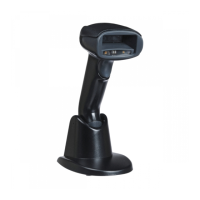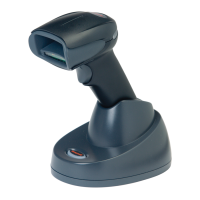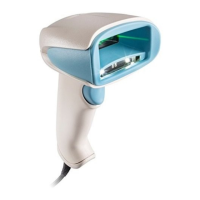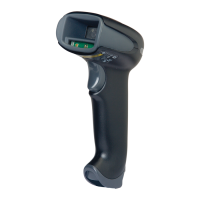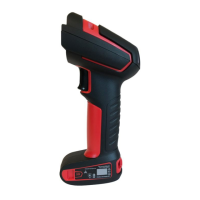3 - 36
When the scanner goes out of range, 15 attempts are made to link to the
base unit or Access Point. Each attempt consists of approximately 5 sec-
onds of active time followed by 3 seconds of idle time. After 15 cycles
(8*15 =120), or about 2 minutes, the scanner stops trying to connect to the
base or Access Point, but retains any bar codes that may have been saved
in batch mode. After one hour, the scanner powers off and batch mode
data is lost.
Auto Reconnect Mode set to 0
Maximum Link Attempts set to 15
Other values at default setting
When the scanner goes out of range, no action is taken to relink. When
the trigger is pulled, 15 attempts are made to link to the base or Access
Point. Each attempt consists of approximately 5 seconds of active time fol-
lowed by 3 seconds of idle time. After 15 cycles (8*15 =120), or about 2
minutes, the scanner stops trying to connect to the base or Access Point,
but retains any bar codes that may have been saved in batch mode. After
one hour, the scanner powers off and batch mode data is lost. Refer to
Auto Reconnect Mode, page 3-33, to review other events that can start the
relink process.
Auto Reconnect Mode set to 1
Maximum Link Attempts set to 0
Relink Time-Out set to 10
Scanner Power Time-Out Timer set to 1800
Note: See Use this selection to set a time-out (in milliseconds) of the
scanner’s trigger when using serial commands to trigger the
scanner. Once the scanner has timed out, you can activate the
scanner either by pressing the trigger or using a serial trigger
command. After scanning the Read Time-Out bar code, set the time-
out duration (from 0-300,000 milliseconds) by scanning digits on the
Programming Chart inside the back cover, then scanning Save.
Default = 30,000 ms. on page 4-8.
The scanner attempts to connect to the base or Access Point every 15 sec-
onds, measured from one attempt start to the next attempt start. After one
half hour, the scanner powers off.
Host Command Acknowledgment
Some applications require that the host terminal (or server) approve or reject
incoming bar code data and notify the operator of these actions. These applica-
tions require that the host maintain control over the response indicators emitted
from the scanner. Turning on Host ACK configures the scanner to respond to
commands from the host system.
Note: System performance degrades when using Host ACK at rates lower than
9600 baud.
The following criteria must be met for the Host ACK to work correctly:
• The cordless system must be configured for Host Port RS232 (terminal ID =
000) or USB COM Emulation (terminal ID = 130).
• RTS/CTS is defaulted off. You must enable it if the host system requires it.
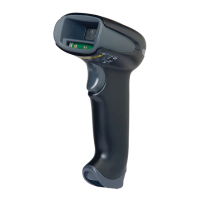
